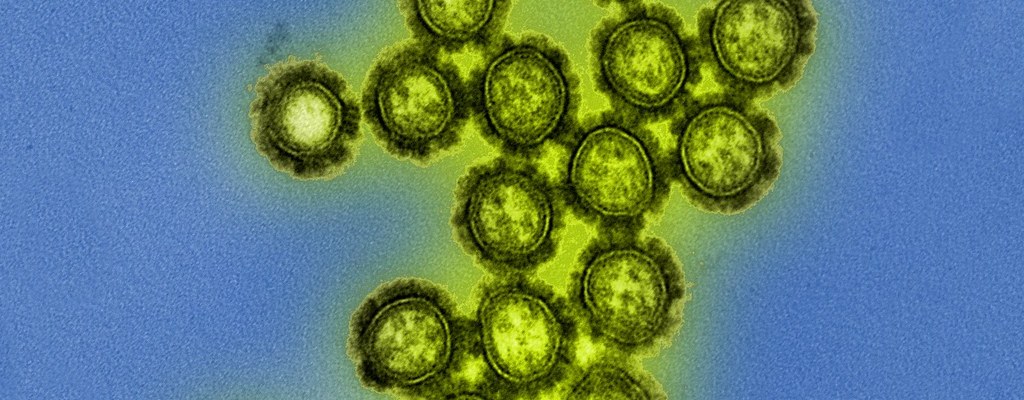|
By Anna Christou
Influenza, commonly known as the flu, is a virus that infects the nose and throat and can lead to sore throat, fever, fatigue, and coughs. The flu is highly contagious and can be spread through the air from sneezing or coughing, or from touching infected surfaces. Each year, 5-20%of Americans contract the flu, leading to 31.4 million outpatient visits and 200,000 hospitalizations annually. Although the flu resolves on its own for most, high-risk patients, such as young children, old adults, or people with chronic illnesses and weakened immune systems, can develop potentially fatal complications, such as pneumonia, bronchitis, or heart problems. The annual flu vaccine is 40-60% effective because it only protects against some strains of the virus, while antiviral medications that reduce the harmful effects of the flu can only treat the illness—not prevent its onset. Therefore, researchers have begun to investigate broadly-neutralizing antibodies as a way to target a wide variety of flu strains at once. Notably, a group of researchers published astudy in Science this past March, outlining their discovery of a pill that can prevent multiple strains of the flu in mice. The Centers for Disease Control and Prevention recommendsthe flu vaccine as a way to protect against the harmful effects of influenza: it can prevent contraction of the virus and, if individuals do become sick, vaccination reduces the severity of their illness. However, the flu vaccine only targets a few specific strains, while new strains continue to emerge. In addition to the vaccine, antiviral drugs, such as Relenza and Tamiflu, can be used to fight the infection and reduce symptoms. One way that antiviral drugs work is by preventing the virus-infected cell from releasing its viral progeny, which could go on to infect other healthy cells. However, these treatments are still not preventive, and reliable prevention techniques still need to be developed. In addition, viruses can develop resistance to antiviral drugs, thus, it becomes even more imperative to develop new methods of combating the flu. Neutralizing antibodies, naturally present in the body, are now being used to prevent the flu. Neutralizing antibodies are carried by immune cells and block the proteins viruses use to invade target cells. Specifically, the antibodies bind to antigens, which are markers of the virus. This renders the virus inactive, since it is now unable to attack and infect host cells. Not all viruses can be inactivated through this approach, since a neutralizing antibody can only bind to specific antigens; however, there are broadly-neutralizing antibodies, which can simultaneously impede a wide variety of virus strains and are, thus, more effective. The fact that influenza-specific, broadly-neutralizing antibodies can be used as a preventive drug is already known. Accordingly, broadly-neutralizing antibodies target the hemagglutinin (HA) stem of the influenza virus, the part of the virus that allows it to enter a host. Since antibodies are large proteins and are difficult to deliver orally, it is necessary to develop smaller molecules in order for this technique to have realistic, practical applications. The researchers who published the aforementioned Science study screened a chemical library to find a small compound that would mimic broadly-neutralizing antibodies and also target the HA stem of the virus. Through in vitro studies, they found that a chemical compound called JNJ7918 could bind effectively to the HA stem and neutralize the influenza virus. The HA stem normally undergoes a conformational change that then triggers the virus to release its genome into the host cell, allowing the virus to reproduce and take over the host. However, JNJ7918 blocks HA and consequently prevents the virus from injecting its genome into the host. The researchers further modified this compound to allow it to bind and neutralize the flu virus more specifically and efficiently. The remodeled compound, named JNJ4796, is more soluble in water and has a lower intrinsic clearance. Intrinsic clearance measures how quickly the liver can metabolize a drug, so a drug with a lower clearance stays active in the body longer. The authors of the paper indicated that increased solubility and lower intrinsic clearance makes this compound more suitable as a drug than JNJ7918. JNJ4796 was also found to bind to and neutralize influenza in vitro, and could protect mice from influenza if administered orally. Since influenza primarily affects the respiratory system, the researchers investigated whether the drug could prevent the flu specifically within the lungs: they found that JNJ4796 could indeed neutralize the influenza infection in bronchial cell cultures. This finding presents a promising method of preventing the flu that can target and attack a broader range of influenza strains. In addition, the development of a small orally-active molecule that mimics a naturally-occurring antibody opens up the possibility of using antibodies as therapies for other diseases, including various types of cancer, rheumatoid arthritis, and multiple sclerosis. Despite this impressive discovery, numerous challenges still exist. Although employing broadly-neutralizing antibodies to fight the flu would allow for more strains of the virus to be targeted, resistance could still emerge. Over time, viruses can develop mutations that confer resistance against these antibodies. Resistant mutants, can then use their selective advantage to infect a larger portion of the population. Nevertheless, the advent of broadly-neutralizing antibodies allows for numerous promising possibilities in flu therapy.
0 Comments
Leave a Reply. |
Categories
All
Archives
April 2024
|

